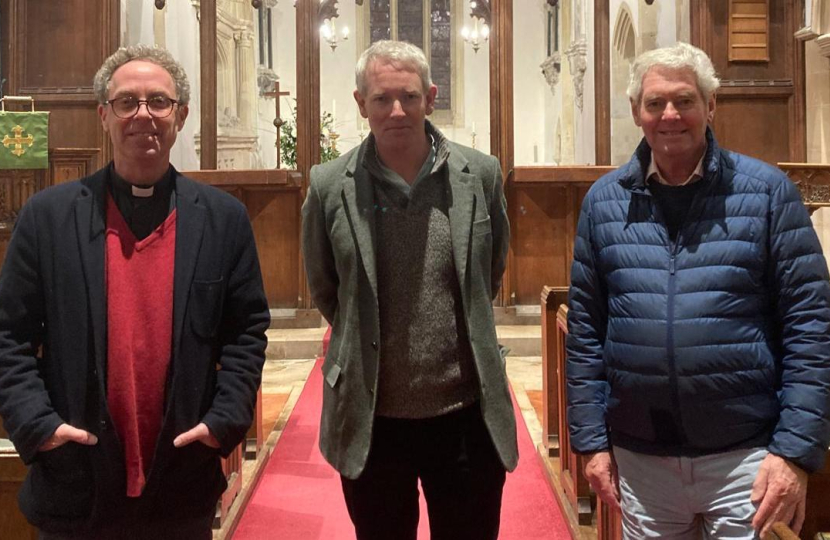
I spent most of this week in the Terminally Ill Adults (End of Life) Bill Committee, hearing evidence from expert witnesses about the detail of this Bill. I am deeply worried by what we have heard. If interested, you can read my quick twitter-thread summaries of the three days’ evidence here, here and here.
Friday I was in Shalbourne, a lovely village nestled below the Burbage-Hungerford road on the very border with Berkshire. Indeed in the old days it wasn’t clear which county it belonged to: ‘Wilts and Berks Both Intermix’d’ is written across the parish on a map of 1761. At the southern - once Berkshire - end is a beautiful 13th century church, much amended by the Victorians (‘Standing figure in a niche between pilasters, the entablature swept up to heraldry’, says Pevsner. ‘Well carved skull below’). I made a short video with the vicar, Colin Heber-Percy, and the churchwarden about the vital need for the Chancellor to continue the scheme of refunding VAT on church repairs (see here).
On the wall is a plaque in memory of local boy Jethro Tull, whose famous seed-drill was thrown down his well by angry farm labourers resentful at automation. His farm was called Prosperous; it wasn’t, despite his innovation, and he died in poverty.
At the other, Wiltshire end of the village is the Plough Inn, rescued from redevelopment by a group of villagers who have invested in the business. I visited in the summer, when the pub’s fate hung in the balance (see here); it was a pleasure to return and congratulate the team on its rebirth (see here).
A great crowd turned out - not to meet me, just a normal Friday night - and we had an impromptu political meeting. There is much good sense in Shalbourne, especially over the Government’s pernicious increase in National Insurance and the underfunding of defence.
But not everyone in the pub shared my persistent belief in Brexit, which happened five years ago this week.
Perhaps Shalbourne is ambivalent over sovereignty because of its own ambiguity about what county it belongs to. Or perhaps there remains a residual European identity: in Norman times this parish belonged to the French monastery of Bec-Hellouin. In 1421 the English Crown, in the form of St George’s Chapel, Windsor, took back control.




